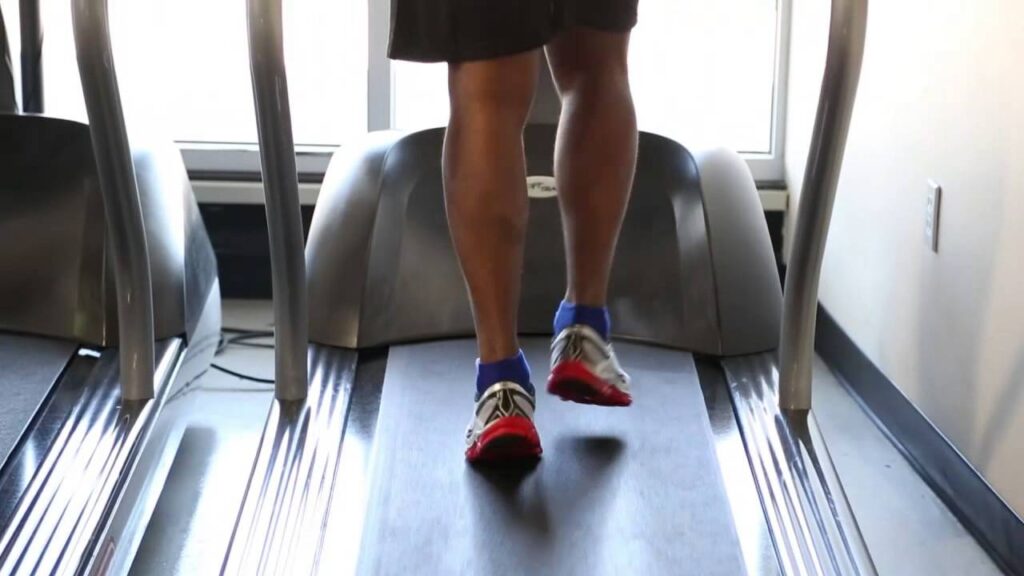If you’re looking to shed some unwanted pounds around your midsection, you might be wondering just how many steps you need to take each day to start seeing results. Well, wonder no more, because we’ve got the answer for you. In this article, we’ll explore the correlation between steps and belly fat loss, giving you the guidance you need to achieve your fitness goals. So, lace up your sneakers and get ready to start walking towards a healthier, slimmer you!

The Relationship Between Steps and Belly Fat
Importance of Physical Activity
Physical activity is crucial for maintaining overall health and well-being. Engaging in regular exercise, including walking, can have a significant impact on reducing belly fat and promoting weight loss. When you lead a sedentary lifestyle, excess calories are stored as fat, particularly in the abdominal area. By increasing your physical activity levels, you can burn more calories and effectively reduce belly fat.
Effects of Belly Fat
Excess belly fat goes beyond just being a cosmetic concern. It can have serious implications for your health. Belly fat is closely linked to an increased risk of heart disease, type 2 diabetes, and certain cancers. Additionally, carrying excess weight around your midsection can contribute to insulin resistance and hormonal imbalances. Understanding the detrimental effects of belly fat highlights the importance of taking steps to reduce it.
How Steps Can Help
Walking is a simple and accessible form of exercise that can effectively contribute to fat loss, especially in the abdominal region. By increasing your daily step count, you can boost your overall physical activity levels, burn calories, and target belly fat specifically. Walking not only contributes to weight loss but also offers numerous other health benefits, such as improving cardiovascular health and reducing stress levels. Incorporating more steps into your daily routine is a practical and effective way to address belly fat.
Determining the Ideal Step Count
The Role of Baseline Activity Levels
When determining the ideal step count to lose belly fat, it’s essential to consider your baseline activity levels. If you lead a sedentary lifestyle with minimal physical activity, starting with a low step target and gradually increasing it over time is advisable. On the other hand, if you already engage in regular exercise, you may need to set a higher step count to continue seeing progress in reducing belly fat.
Factors That Influence Step Target
Several factors can influence your optimal step count for belly fat loss. These factors include your current weight, age, individual metabolism, and overall health condition. The more factors you incorporate into your assessment, the more accurately you can determine your step target to achieve your desired results.
Recommended Guidelines
While individual step targets may vary, there are generally accepted guidelines for reaching optimal step counts for belly fat loss. The American Heart Association recommends aiming for at least 10,000 steps per day to experience health benefits. However, if your main focus is specifically on reducing belly fat, research suggests that increasing your step count to 12,000-15,000 steps per day may yield more significant results.
How to Track and Increase Your Step Count
Using a Pedometer or Fitness Tracker
One of the simplest and most effective ways to track your step count is by using a pedometer or fitness tracker. These devices accurately measure the number of steps you take throughout the day, providing valuable feedback on your progress. Many smartphones also have built-in pedometer features, making it even easier to monitor your step count.
Incorporating Walking into Daily Routine
To increase your step count, it’s important to find opportunities to incorporate more walking into your daily routine. Simple actions such as taking the stairs instead of the elevator, parking farther away from your destination, or going for short walks during your lunch break can add up and help you achieve your step goals. Look for ways to be more active throughout your day, and you’ll soon see your step count increase.
Tips for Increasing Step Count
If you find it challenging to reach your desired step count, there are several tips you can utilize to help you get there:
- Set realistic goals: Start with smaller increments and gradually increase your step count over time. Setting achievable goals will keep you motivated and prevent burnout.
- Find a walking buddy: Walking with a friend or family member can make the activity more enjoyable and help you stay accountable.
- Take active breaks: Instead of sitting for extended periods, take short breaks to stretch your legs and go for a quick walk.
- Explore new walking routes: Spice up your walking routine by exploring different routes or nature trails. This can keep you engaged and motivated to continue walking.
- Join walking challenges: Participating in walking challenges or virtual races can provide a sense of community and competition, keeping you motivated to increase your step count.
By implementing these tips, you can gradually increase your step count and work towards reducing belly fat effectively.
The Benefits of Walking for Belly Fat Loss
Boosting Metabolism and Burning Calories
Walking is a low-impact aerobic activity that boosts your metabolism and burns calories. When you engage in brisk walking, your heart rate increases, and your body utilizes stored fat as fuel. This process not only contributes to overall fat loss but also helps target stubborn belly fat.
Engaging Abdominal Muscles
While walking primarily targets the lower body muscles, it also engages the core muscles, including the abdominal muscles. When you maintain proper posture and engage your core while walking, you activate and strengthen the muscles in your abdomen. Over time, this can lead to improved muscle tone and a leaner appearance.
Reducing Stress and Cortisol Levels
Chronic stress can contribute to stubborn belly fat. Walking, especially in natural environments or green spaces, has been shown to reduce stress levels and lower cortisol, the primary stress hormone. By incorporating regular walks into your routine, you can effectively manage stress and prevent the accumulation of belly fat associated with increased cortisol levels.

Complementing Steps with Other Strategies
A Balanced and Healthy Diet
While increasing your step count is crucial for reducing belly fat, it’s essential to complement this with a balanced and healthy diet. Focus on incorporating nutrient-dense foods, such as fruits, vegetables, lean proteins, and whole grains, into your meals. Avoid highly processed foods, sugary beverages, and excessive calorie consumption. By combining proper nutrition with increased physical activity, you can optimize your belly fat loss goals.
Strength Training Exercises
In addition to walking, incorporating strength training exercises into your fitness routine can help further enhance belly fat loss. Strength training builds lean muscle mass, which increases your resting metabolism and promotes overall fat burning. Targeted abdominal exercises, such as planks, Russian twists, and bicycle crunches, can also help strengthen and tone the muscles in your midsection.
High-Intensity Interval Training (HIIT)
To maximize your belly fat loss, consider integrating high-intensity interval training (HIIT) into your exercise routine. HIIT involves alternating between short bursts of intense exercise and brief recovery periods. This type of training has been shown to be effective in reducing overall body fat, including belly fat. Combining HIIT workouts with walking can provide a well-rounded approach to achieving your desired results.
Addressing Common Concerns and Misconceptions
Spot Reduction: Myth or Reality?
One common misconception is that you can specifically target belly fat through spot reduction exercises. However, spot reduction is largely considered a myth. While engaging in abdominal exercises can strengthen and tone the underlying muscles, they won’t directly burn the fat in that area. Instead, a comprehensive approach that includes regular walking, a balanced diet, and overall weight loss is essential for reducing belly fat.
Intensity vs. Step Count
The intensity of your walking can influence the amount of calories burned, but step count remains an important factor for overall physical activity. Walking at a brisk pace rather than a leisurely stroll can increase your calorie expenditure. However, even if you’re unable to walk at a high intensity, increasing your step count can still have a significant impact on reducing belly fat.
Consistency and Long-Term Commitment
Achieving and maintaining a healthy weight, including reducing belly fat, requires consistency and long-term commitment. While increasing your step count and engaging in regular exercise is crucial, it’s important to make it a sustainable habit. Remember that small changes over time can lead to significant results, and maintaining your progress is just as important as achieving it.

Monitoring Progress and Adjusting Goals
Setting Realistic Expectations
When embarking on a belly fat loss journey, it’s essential to set realistic expectations. Sustainable weight loss typically ranges from 0.5 to 2 pounds per week. By setting achievable goals, you can maintain motivation and ensure you’re making progress in reducing belly fat. Remember that progress may not always be linear, and it’s important to celebrate small victories along the way.
Tracking Weight and Waist Circumference
Monitoring your weight and waist circumference can serve as valuable progress indicators. However, it’s important to remember that the number on the scale is not the only measure of success. As you engage in regular exercise, including walking, you may be building lean muscle while simultaneously losing fat. This can result in a decrease in waist circumference, even if the scale doesn’t budge significantly.
Reassessing Step Targets
As you progress in your journey to lose belly fat, it’s crucial to periodically reassess your step targets. As your fitness level improves and your body adapts to increased physical activity, you may need to increase your step count to continue seeing results. Regularly challenging yourself and adjusting your goals will help keep you on track and make continual progress.
Safety Precautions and Considerations
Listening to Your Body
While walking is generally a safe form of exercise, it’s important to listen to your body and avoid overexertion. If you experience pain or discomfort while walking, it’s advisable to rest and seek medical advice if necessary. Gradually increase your step count over time and pay attention to any warning signs from your body.
Gradual Progression and Injury Prevention
To prevent injuries, it’s crucial to progress gradually in your walking routine. This allows your body to adapt to increased physical activity and reduces the risk of strains or sprains. Start with a manageable step count and gradually increase it by 10% each week. Stretching before and after your walks can also help improve flexibility and reduce the likelihood of injury.
Seeking Professional Advice
If you have any underlying health conditions or concerns, it’s important to consult with a healthcare professional before starting a new exercise program. They can provide personalized advice and address any potential risks or limitations related to walking and belly fat loss. Remember, the guidance of a professional can help you navigate your health journey safely and effectively.

Staying Motivated and Overcoming Challenges
Setting Short-Term and Long-Term Goals
To stay motivated on your journey to reduce belly fat, it’s helpful to set both short-term and long-term goals. Short-term goals can be small milestones, such as reaching a certain step count or consistently walking for a designated period each day. Long-term goals may include reaching a specific waist circumference or achieving an overall healthier lifestyle. By having these goals in mind, you can stay focused and motivated throughout your journey.
Finding Accountability and Support
Accountability and support can make a significant difference in staying motivated. Consider enlisting a friend or family member as a walking buddy, joining a walking group, or participating in virtual challenges or competitions. Having others to share your progress with, exchange tips and encouragement, and celebrate achievements can help you stay committed to your belly fat loss goals.
Overcoming Plateaus
It’s common to experience plateaus during your belly fat loss journey. Despite consistent efforts, you may find that your progress slows or stalls temporarily. During plateaus, it’s essential to stay positive and persist with your walking routine. Consider adjusting other aspects of your wellness plan, such as incorporating interval training or revisiting your nutrition habits. Remember that plateaus are normal and can be overcome with patience and perseverance.
The Overall Impact of Walking on Health and Well-Being
Improved Cardiovascular Health
Regular walking has numerous benefits for cardiovascular health. It strengthens the heart, lowers blood pressure, and improves circulation. By reducing belly fat and maintaining a healthy weight through walking, you significantly reduce the risk of heart disease, stroke, and other cardiovascular conditions.
Enhanced Mood and Mental Well-Being
Walking not only benefits your physical health but also has a positive impact on your mental well-being. Engaging in outdoor walks or spending time in green spaces can boost mood, reduce stress and anxiety, and improve overall mental health. It offers a time for reflection, relaxation, and a break from the demands of daily life.
Promoting a Healthy Lifestyle
Walking serves as a gateway to adopting a healthy and active lifestyle. By incorporating regular walks into your routine, you establish a foundation for overall wellness. Over time, you may find yourself naturally gravitating towards other forms of exercise, making healthier food choices, and prioritizing self-care. Walking can be the catalyst for positive change and transformation in various aspects of your life.
In conclusion, incorporating more steps into your daily routine is essential for reducing belly fat, promoting weight loss, and improving overall health. Walking is a simple and accessible form of physical activity that offers numerous benefits, including increased calorie burn, engagement of abdominal muscles, and reduced stress levels. By complementing walking with a balanced diet, strength training exercises, and high-intensity interval training, you can maximize your belly fat loss efforts. Remember to set realistic goals, monitor your progress, listen to your body, and stay motivated throughout your journey. With dedication and consistency, walking can be a powerful tool in achieving a healthy lifestyle and reducing belly fat for good.







